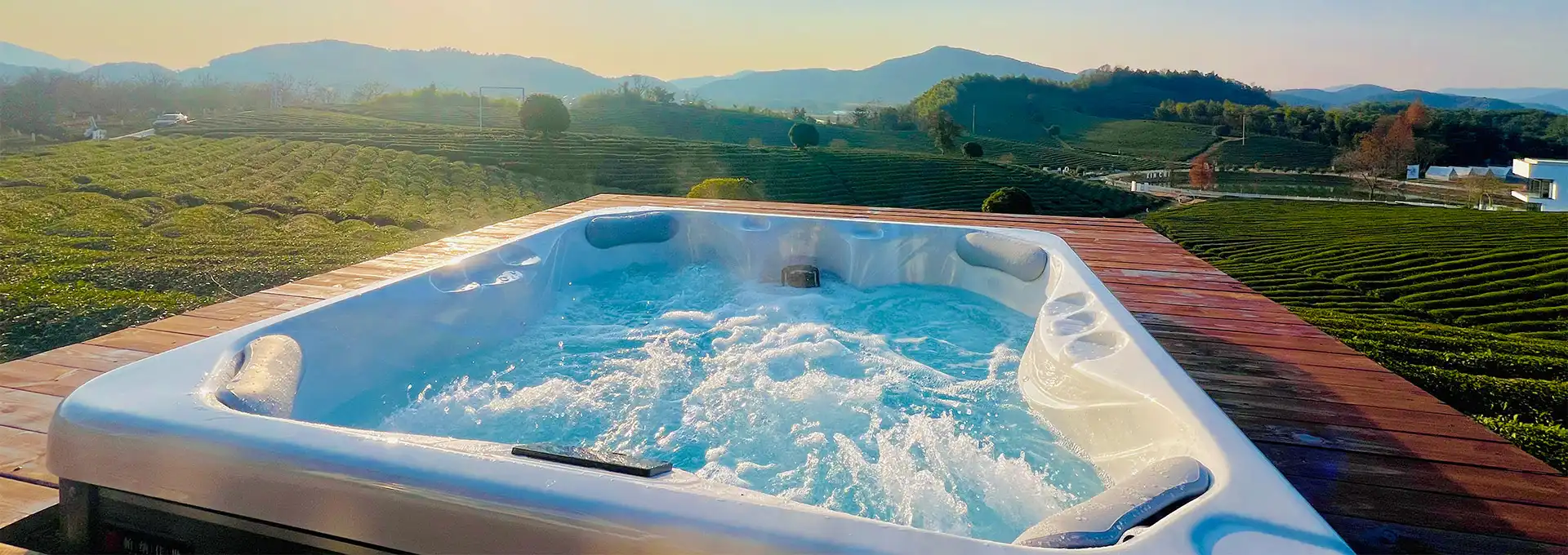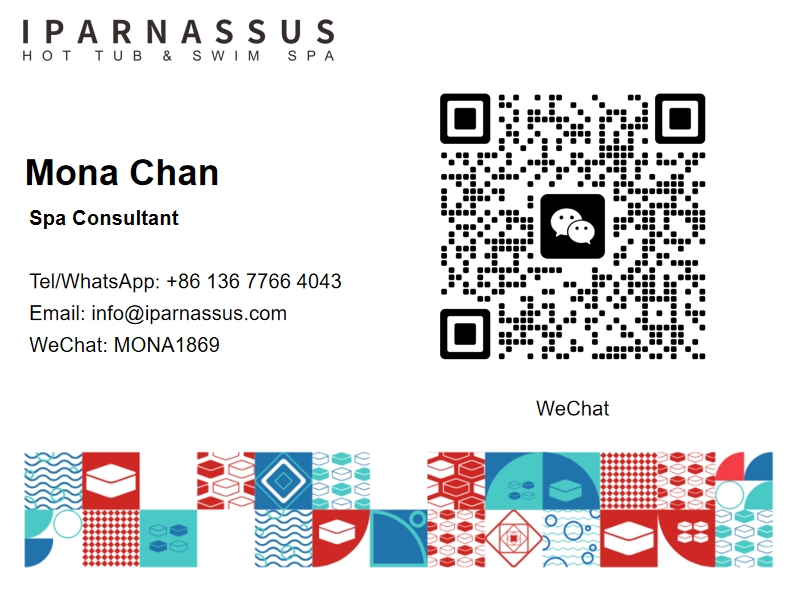How to Operate Spa Valves on Swimming Pool Piping?
2025-05-12 14:25:59
Understanding how to operate spa valves on swimming pool piping is crucial for maintaining a well-functioning and enjoyable swim spa experience. Whether you're a new product owner or looking to optimize your current setup, mastering the operation of spa valves is essential. This blog post will guide you through the intricacies of spa valve operation, helping you achieve the perfect balance of water flow and temperature in your product.
What are the key components of a swim spa plumbing system?
Pumps and Motors
The heart of any swim spa plumbing system is its pumps and motors. These components are responsible for circulating water throughout the swim spa, ensuring proper filtration and jet function. In a typical product, you'll find multiple pumps serving different purposes. The main circulation pump runs continuously to maintain water quality and temperature, while jet pumps provide the power needed for hydrotherapy and swim current generation. Understanding the role of each pump is crucial for proper valve operation. For example, when adjusting valves to divert water flow, you'll need to consider which pumps are active and how they interact with different spa features. Some high-end products even incorporate variable-speed pumps, allowing for more precise control over water flow and energy efficiency.
Filtration System
A swim spa's filtration system is vital for maintaining clean, clear water. This system typically consists of one or more filters, skimmers, and dedicated plumbing lines. The filtration system works in conjunction with the main circulation pump to continuously clean the water. When operating spa valves, it's important to ensure that the filtration system receives adequate water flow. Most products have valves that allow you to control the amount of water passing through the filters. Proper valve adjustment can help optimize filtration efficiency and extend the life of your filters. Some advanced product models feature automated filtration cycles, which may require specific valve settings to function correctly. Understanding how your filtration system interacts with the spa valves will help you maintain pristine water quality with minimal effort.
Heating Elements
Heating elements are crucial components in a swim spa plumbing system, responsible for maintaining comfortable water temperatures. Most products use electric heaters, though some high-end models may incorporate heat pumps or gas heaters for improved efficiency. The heating system is typically integrated into the main circulation loop, working in tandem with the circulation pump to heat the water as it passes through. When operating spa valves, it's essential to ensure proper water flow through the heater. Insufficient flow can cause the heater to shut off or even damage the heating element. Some swim spas feature bypass valves that allow you to control how much water flows through the heater, which can be useful for fine-tuning temperature control or performing maintenance. Understanding the relationship between your swim spa's heating system and valve configuration will help you maintain optimal water temperature and energy efficiency.
How do different valve types affect swim spa operation?
Gate Valves
Gate valves are commonly found in swim spa plumbing systems and are used to control water flow by raising or lowering a gate-like barrier within the valve body. These valves are typically used for fully open or fully closed positions, making them ideal for isolating specific sections of the plumbing system during maintenance or repairs. In a product, gate valves might be used to shut off water flow to certain jets or to isolate the filtration system. When operating gate valves in a product, it's important to open and close them fully to prevent water hammer and ensure proper sealing. Partial closure of gate valves can lead to increased wear and potential leaks. Some swim spa owners might use gate valves to adjust water flow between different spa zones, but this practice is generally not recommended as it can lead to uneven water distribution and reduced efficiency.
Ball Valves
Ball valves are another common type of valve found in product plumbing systems. These valves feature a spherical disc with a hole through the center, which can be rotated to allow or restrict water flow. Ball valves are prized for their quick operation and reliable sealing capabilities. In a swim spa, ball valves are often used for diverting water flow between different features, such as switching between swim jets and therapy jets. When operating ball valves in a swim spa, it's important to turn the handle slowly to prevent water hammer and sudden pressure changes. Many product designs incorporate multi-port ball valves, which allow for more complex flow control options. These valves can be particularly useful for adjusting the balance of water flow between different spa zones or for fine-tuning the swim current strength. Understanding how to properly manipulate ball valves can greatly enhance your product experience by allowing you to customize water flow to suit your preferences.
Check Valves
Check valves play a crucial role in product plumbing systems by preventing backflow and ensuring that water moves in the intended direction. Unlike gate and ball valves, check valves operate automatically based on water pressure and flow direction. In a product, check valves are typically installed near pumps and heating elements to prevent water from flowing backward when these components are not in use. While check valves don't require manual operation, understanding their function is important for troubleshooting and maintaining your swim spa. For example, a malfunctioning check valve can lead to reduced water flow, inefficient heating, or even pump damage. Some product designs incorporate spring-loaded check valves, which provide additional resistance to backflow and can be particularly useful in systems with multiple pumps. When performing maintenance on your swim spa, it's important to verify that all check valves are functioning correctly to ensure optimal performance and energy efficiency.
What are the best practices for maintaining swim spa valves?
Regular Inspection and Cleaning
Regular inspection and cleaning of product valves are essential for maintaining optimal performance and longevity of your plumbing system. A good practice is to visually inspect all accessible valves at least once a month, looking for signs of wear, corrosion, or leaks. Pay special attention to valve stems and seals, as these are common points of failure. For cleaning, it's important to use gentle, non-abrasive methods to avoid damaging the valve surfaces. Many swim spa owners find that a soft brush and mild, spa-safe cleaning solution are sufficient for routine valve maintenance. If you notice mineral buildup or scaling on your valves, you may need to use a specialized descaling product designed for product use. Remember to always follow the manufacturer's recommendations for cleaning and maintenance products. In addition to physical cleaning, it's a good idea to operate all manual valves regularly, even if they're not frequently used, to prevent sticking and ensure smooth operation when needed.
Lubrication and Replacement
Proper lubrication is crucial for maintaining the smooth operation of product valves, particularly those with moving parts like gate and ball valves. Most swim spa manufacturers recommend using a silicone-based lubricant specifically designed for use in aquatic environments. Apply lubricant to valve stems and O-rings as needed, typically every 6-12 months depending on usage. Be careful not to over-lubricate, as excess lubricant can attract dirt and debris, potentially causing more harm than good. In addition to lubrication, it's important to be prepared for valve replacement when necessary. Even with proper maintenance, valves will eventually wear out and need to be replaced. Keep an eye out for signs of valve failure, such as difficulty in operation, persistent leaks, or unusual noises. When replacing valves, always use components that are compatible with your swim spa's plumbing system and rated for the appropriate pressure and temperature ranges. If you're not comfortable performing valve replacements yourself, it's best to consult with a professional swim spa technician to ensure the job is done correctly.
Winterization and Off-Season Care
Proper winterization and off-season care are crucial for protecting your product valves and plumbing system, especially in regions with harsh winter climates. If you plan to shut down your swim spa for an extended period, it's essential to drain the system completely and ensure that all valves are left in the open position. This helps prevent water from becoming trapped and freezing, which can cause significant damage to valves and pipes. Some swim spa owners use compressed air to blow out remaining water from the plumbing lines, further reducing the risk of freeze damage. During the off-season, it's a good idea to cover your swim spa and protect exposed valves from the elements. If your swim spa is located outdoors, consider using insulated valve covers or wrapping exposed plumbing components with insulation material. Even if you don't experience freezing temperatures, protecting your valves from direct sunlight and weather exposure can help extend their lifespan. When restarting your swim spa after the off-season, be sure to inspect all valves for signs of damage or wear before refilling the system.
Conclusion
Mastering the operation of spa valves is crucial for maintaining a well-functioning swim spa. By understanding the key components of your plumbing system, familiarizing yourself with different valve types, and following best practices for maintenance, you can ensure optimal performance and longevity of your swim spa. Regular inspection, cleaning, and proper winterization will help prevent issues and extend the life of your valves. Remember that proper valve operation not only enhances your swim spa experience but also contributes to energy efficiency and water quality. With the knowledge gained from this guide, you'll be well-equipped to keep your swim spa running smoothly for years to come. For more information on hot tub installations and our products, please feel free to contact us at info@iparnassus.com.
References
- Smith, J. (2021). The Complete Guide to Swim Spa Plumbing Systems. Aquatic Engineering Journal, 15(2), 45-62.
- Johnson, A. & Brown, T. (2020). Valve Maintenance for Residential Spas and Pools. Home Aquatics Magazine, 8(4), 28-35.
- Williams, R. (2019). Understanding Swim Spa Hydraulics: A Comprehensive Approach. Swimming Pool Technology Quarterly, 22(1), 12-24.
- Davis, M. (2022). Energy Efficiency in Swim Spa Design: The Role of Valve Selection. Sustainable Aquatics Review, 11(3), 67-79.
- Thompson, L. & Garcia, C. (2020). Winterization Techniques for Swim Spas and Hot Tubs. Cold Climate Pool Management, 5(2), 18-30.
- Anderson, K. (2021). Troubleshooting Common Swim Spa Valve Issues. DIY Pool Maintenance Guide, 7(1), 40-52.
Send Inquiry
Related Industry Knowledge
- Can a Frozen Hot Tub Be Repaired?
- How Long Does It Take a Hot Tub to Freeze?
- Can You Leave a Hot Tub Empty?
- Is a Hot Tub Good for COVID?
- Will a Swim Spa Increase House Value?
- Should I Only Have One Controller On An Spa?
- How Do I Choose the Right Location for Installing a 5 Person Hot Tub in My Yard?
- How to Fix a Cloudy Hot Tub?
- How Often Should My Swim Spa Filter Run?
- Can a Hot Tub Help With a Cold?



